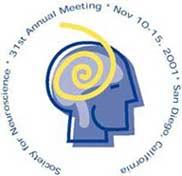[ ONLINE INTERVIEW ]

to unlock Alzheimer's mystery
BRAIN CHOLESTEROL AND NEURONAL
FUNCTION
LAY SUMMARY ARTICLE FOR TEACHING SESSION No.23.4
Alexei Koudinov, Temirbolat Berezov & Natalia Koudinova
For continuous coverage, questions and to locate our related recent key FASEB J and Neurosci Lett articles please see: http://anzwers.org/free/neurology/
More than one hundred thousand research papers were devoted to cholesterol since 1966 and only few papers dealt with the role of cholesterol in neuronal function (according to the PubMed search at the National Library of Medicine web site). This mysterious molecule is accused in atherosclerosis and heart disease, the reason for “no cholesterol” message on huge number of items in any grocery and supermarket shelf.
Another fact is that there is no life without cholesterol: all mammalians create their own cholesterol and adsorb cholesterol from the diet. Thus, when one consume no-cholesterol-food the body has to compensate the lack of dietary cholesterol, so there will be a supply of this essential chemical. Living cells produce their own cholesterol and can receive or donate cholesterol via lipoprotein transit, an attested body lipid transportation system. This system operates a number of vehicle classes, including well known “bad” LDLs and “good“ HDLs.
Apart from this whole-body-system stands distinct brain lipid transport authority that uses different sybtypes of “good” HDLs and normally does not maintain “bad” LDLs. This vital service is in charge of cholesterol redistribution inside the brain and cholesterol export out of the brain border to liver for excretion. There is no cholesterol import to the brain, an issue that makes brain cholesterol availability entirely dependent on local manufacturing. Brain lipid transportation should have good management and operating capacity, because the number of passengers, cholesterol molecules, in the brain is much higher then anywhere else in the rest of the body. Thus, having just two percent of the body weight, brain has a quarter of cholesterol present in the whole individual.
Cholesterol is a building block of any cell membrane (the nervous system wrapping material, where neuronal information in the form of electric activity is generated and propagated) and of specialized membrane structures, lipid rafts and synaptic vesicles. In the brain the information (coded as nerve impulse) is transmitted from presynaptic neuron-transmitter to postsynaptic neuron-receiver at the tiny gap between cells called synapse. The first neuron output nerve ending (called axon) releases synaptic vesicles containing chemicals called neurotransmitters. The neurotransmitter molecules then bind to receptors of the neuron-receiver input processes, located in postsynaptic membrane functional domains, called lipid rafts. After the minute interaction with a receptor on the neuron-receiver, neurostransmitter molecules normally return back to the nerve ending (from where they were released) for recycling in order to be ready for the next act of neurotransmission. This transient neurotransmitter-receptor interaction, representing the quantum of neurotransmission and synaptic function, launches a number of chemical changes inside the postsynaptic neuron-receiver, essential for the nerve signal processing, synaptic amplification (also called synaptic plasticity) or modulation, and for the formation of memory.
Todate, several but not many reports implicate cholesterol in synaptic function, particularly in trafficking and recycling of synaptic vesicles, in receptor function, activity of accessory synaptic proteins, as well as in modulation of membrane physical properties. Moreover, in our recent work (to be presented as scientific session and also included in the press book as lay-language summary, see below) we showed that neuronal cholesterol disbalance impaires neuronal function and synaptic plasticity, disrupts neuronal processes integrity and primes the pathology of tau protein, the prime features of Alzheimer’s neuronal degeneration.
Based on our study and on several papers published by other research groups, we believe that cholesterol pathology is the primary pathogenic event of Alzheimer’s disease. Exact break in normally precisely regulated brain cholesterol supply machinery awaits further detailed investigation and may include defective neuronal-activity dependent cholesterol creation, local transportation and export out of the brain border.
Thus, there is a great demand for the united research on brain function, synaptic plasticity, learning, memory, neurodegeneration and cholesterol. This presently underdeveloped subject awaits many important contributions. Such untouched science journey will likely help us to better understand the basics of normal brain function and several neurological diseases, the prime target being Alzheimer’s disease.
***********
For further details please see our another teaching neuroscience session (also presented in the meeting press book) entitled “Neuronal cholesterol pathology is the cause of Alzheimer's disease” (session #23.3) and scientific session “Essential role for cholesterol in synaptic plasticity and neuronal degeneration” (session #752.5).
Also please note that full text of this teaching session is also available as
Text copyright © 2001 by Alexei Koudinov and Natalia Koudinova
To cite this article use:
A.R. Koudinov, T.T.Berezov & N.V. Koudinova. (2001)
Brain Cholesterol and Neuronal Function. 31st Soc Neurosci Meeting Press
book
![]()
![]()


![]()
Call Inter cell:
(972 55) 26-4823
or place:
[ ONLINE INTERVIEW ]
Please note that by the end of the SFN Annual Meeting 2001 week our another and most recent key contribution should be available as full size article. Stay tuned to navigate to this article soon.
Full text article
of our most recent key publication become available on
November 27, 2001.
***********
Thank you for sharing with us our scientific excitement
